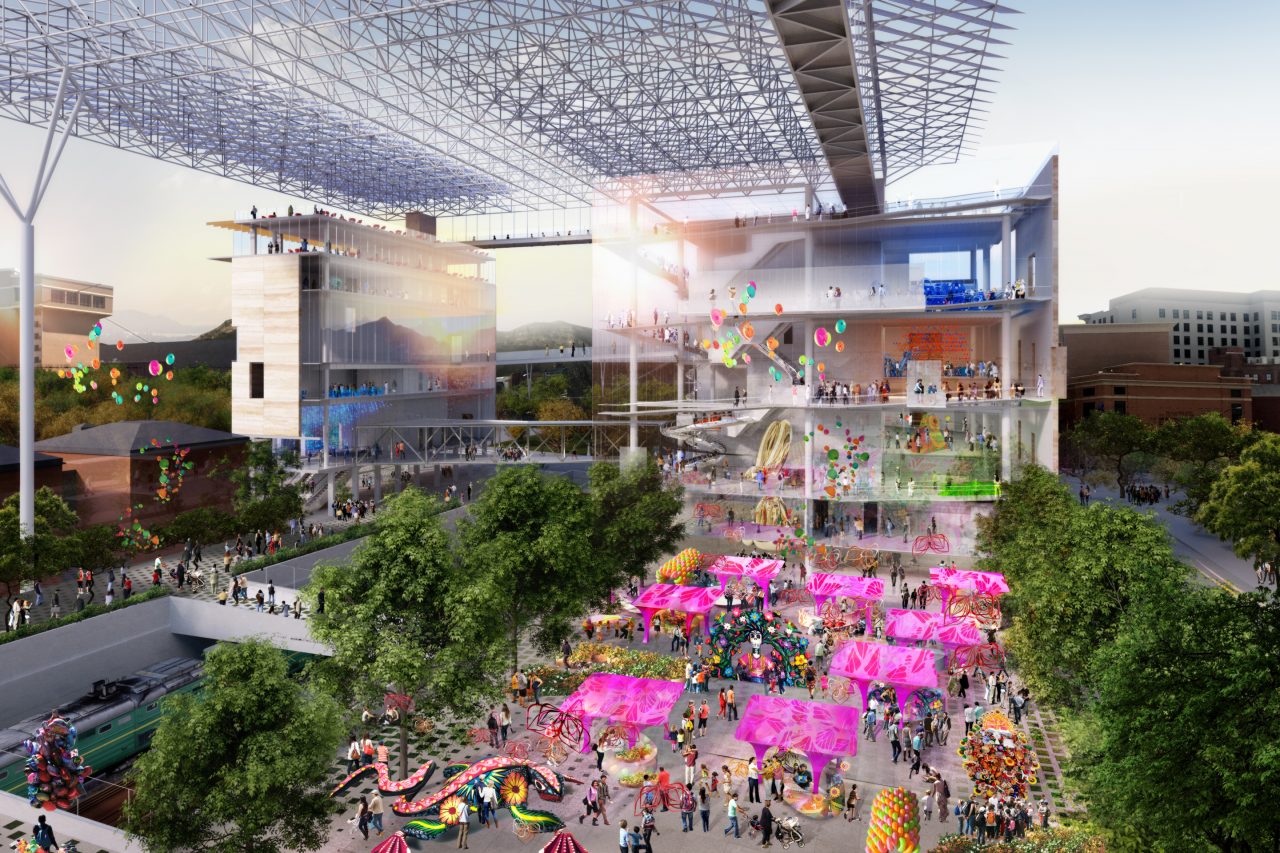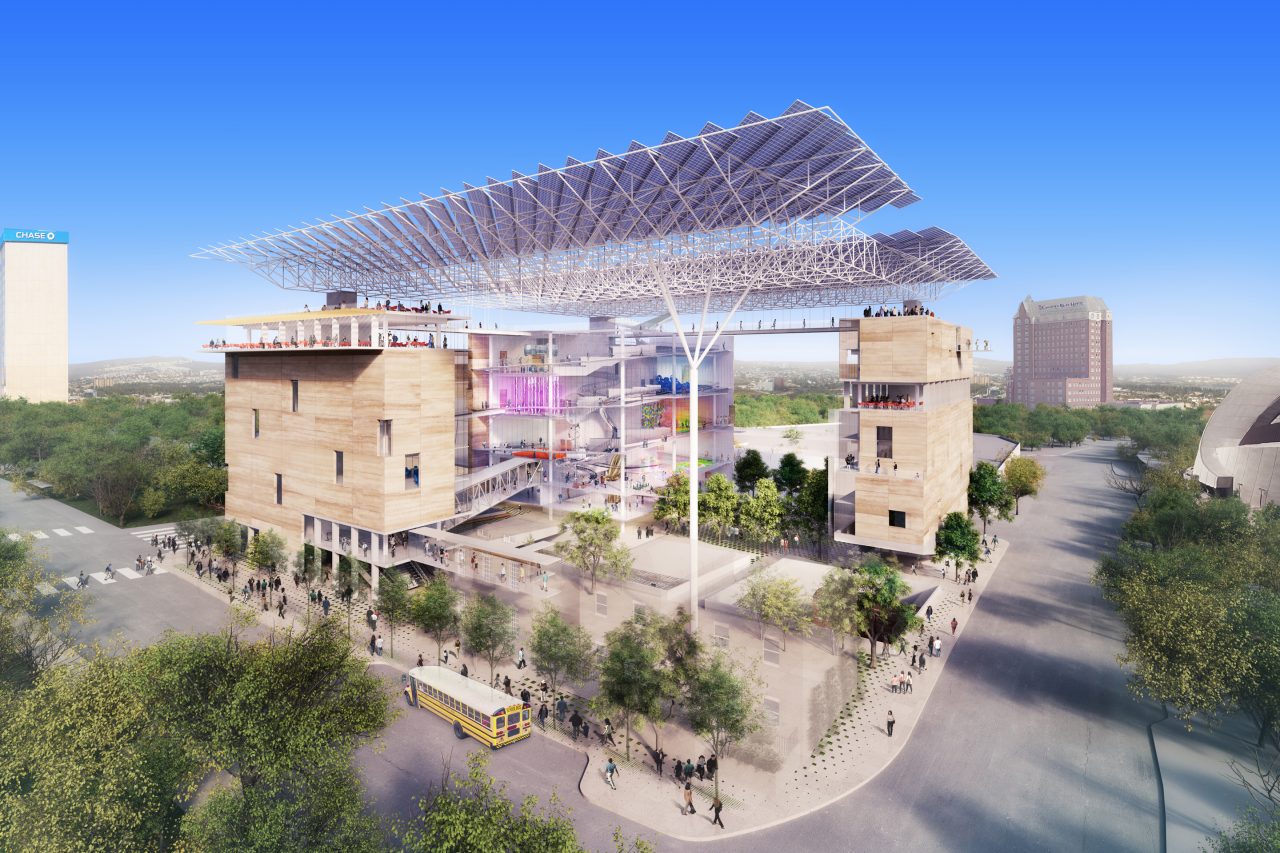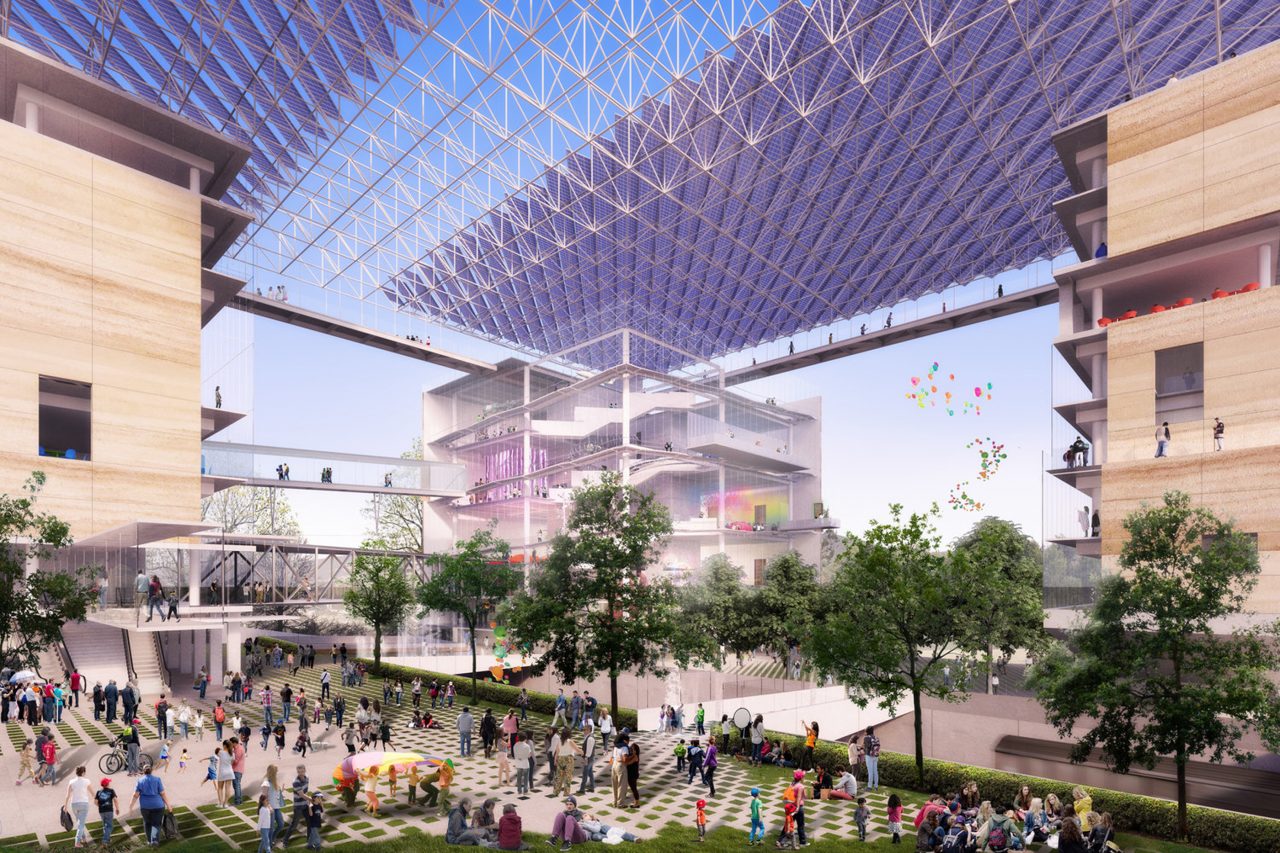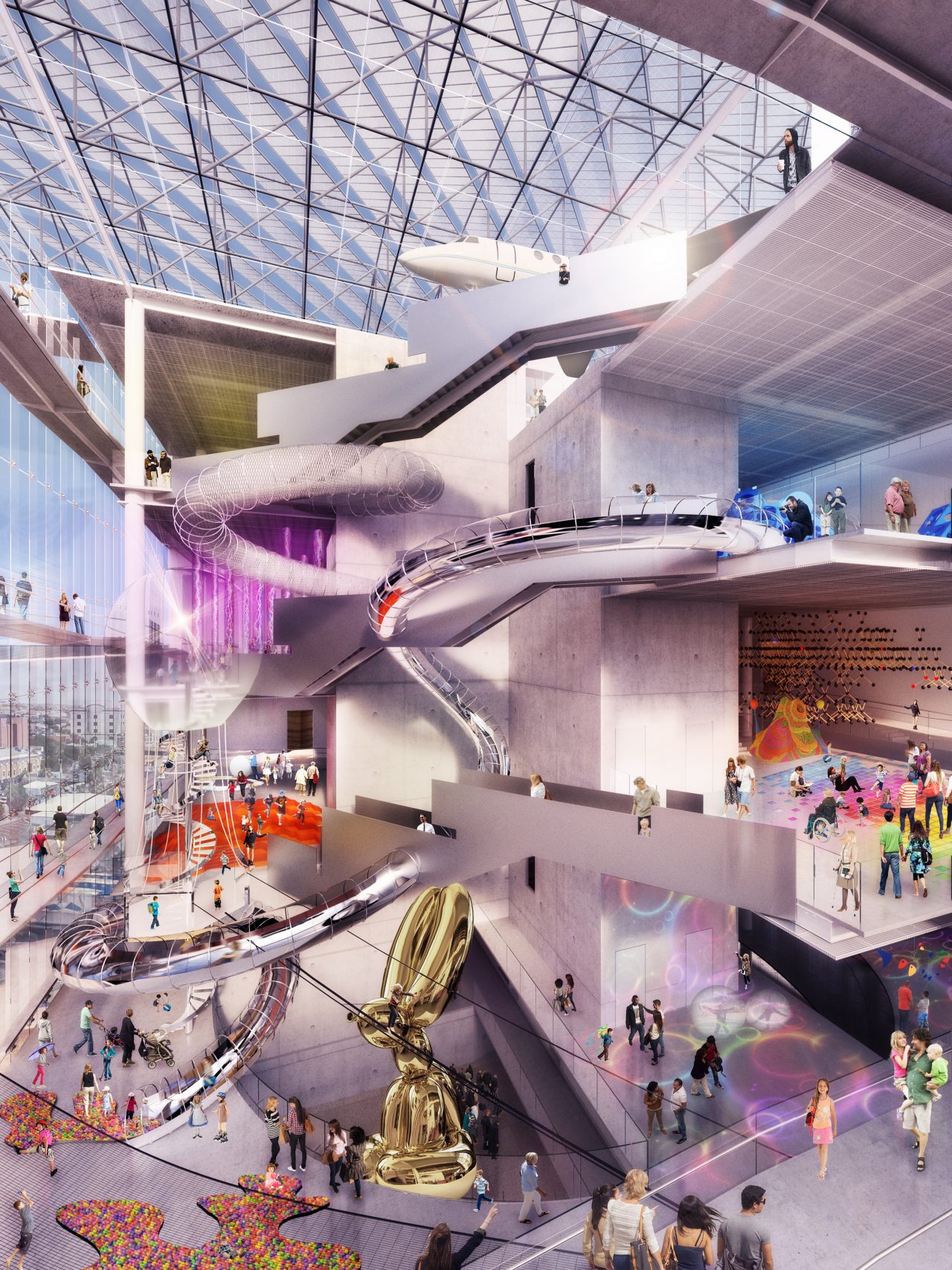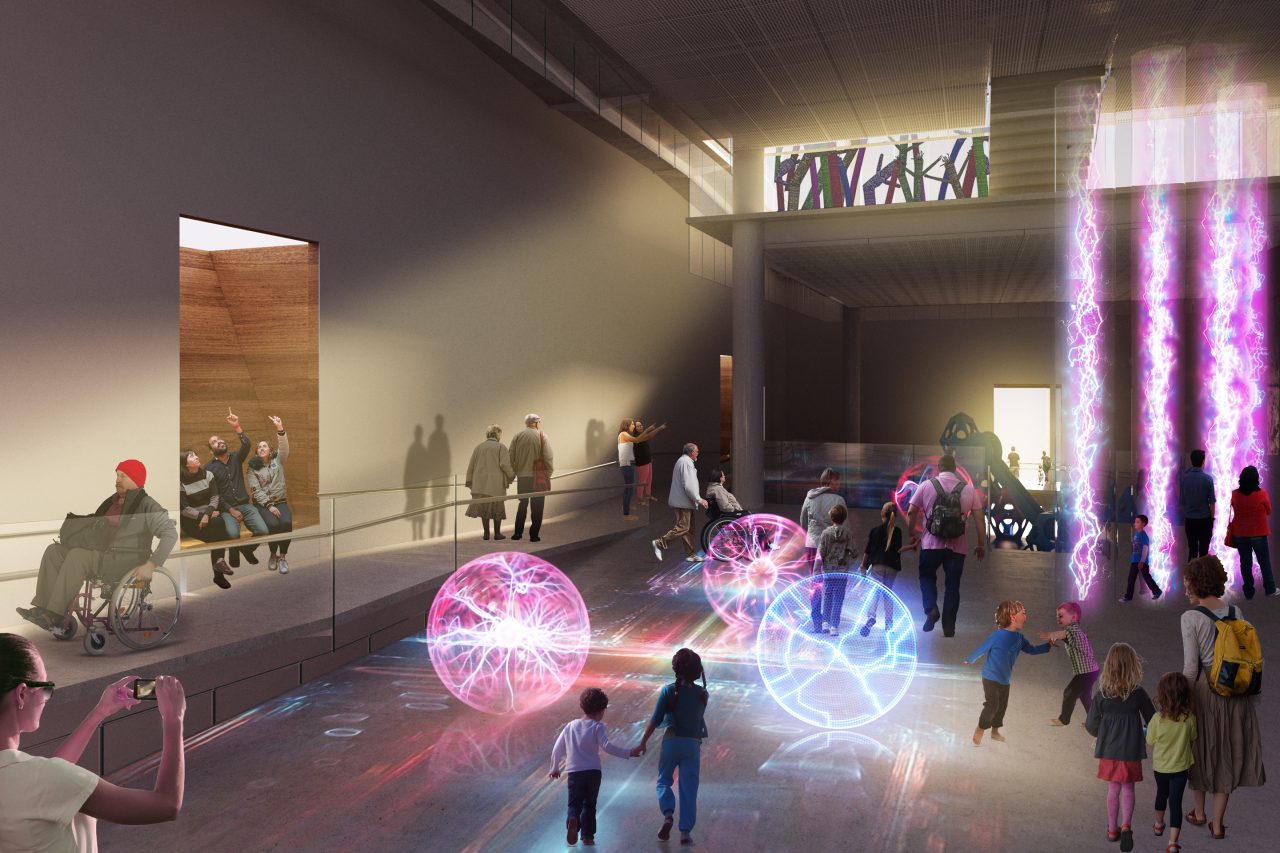El Paso Children’s Museum
Competition Entry – El Paso, more than any other city in the US, is bi-cultural. El Paso’s relationship to Ciudad Juarez has created a vibrant ‘borderplex’ region, home to the largest bi-lingual workforce in the Western Hemisphere and world’s largest international border city. These two cities are not defined by the border, not two halves of one whole – but together they create a single, integrated community – one which occupies a land all its own. this project affords us the opportunity to use arts and culture to create a bridge, not a wall, bet ween the countries. A vibrant civic space, particularly one situated in the heart of an urban area, represents the potential to bring together a diverse range of communities, creating meaningful connections between them and with the activities and programs offered.
These spaces are opportunities to enlighten and inspire all through the potentiality in public assembly, shared experience, delight and wonder. All these possibilities are powerfully inherent in the El Paso Children’s Museum project. The site is defined by three ‘gateways’ representing Entry, Exhibitions and Education. Drawing from the context’s distinct topology – a desert flanked by two mountains – the gateways’ public faces are cladded by locally sourced, pre-fabricated rammed-earth panels. this layer protects from the sun’s heat, allows for passive cooling, and defines the unique image of El Paso’s regional terrain. The masses are strategically lifted to allow the adjacent gardens and plaza to slip into and connect the museum site.
A suspended canopy unifies the site and creates a shared community space, shading and embracing the expansive roof terraces, water, and garden plazas. The canopy is key to providing the much-needed protection from the sun, while collecting both sun energy and water for future use inside the campus. The result is a 360-degree experience connecting public gardens, visitor amenities and exhibitions into one vibrant panorama of wonder and delight.


